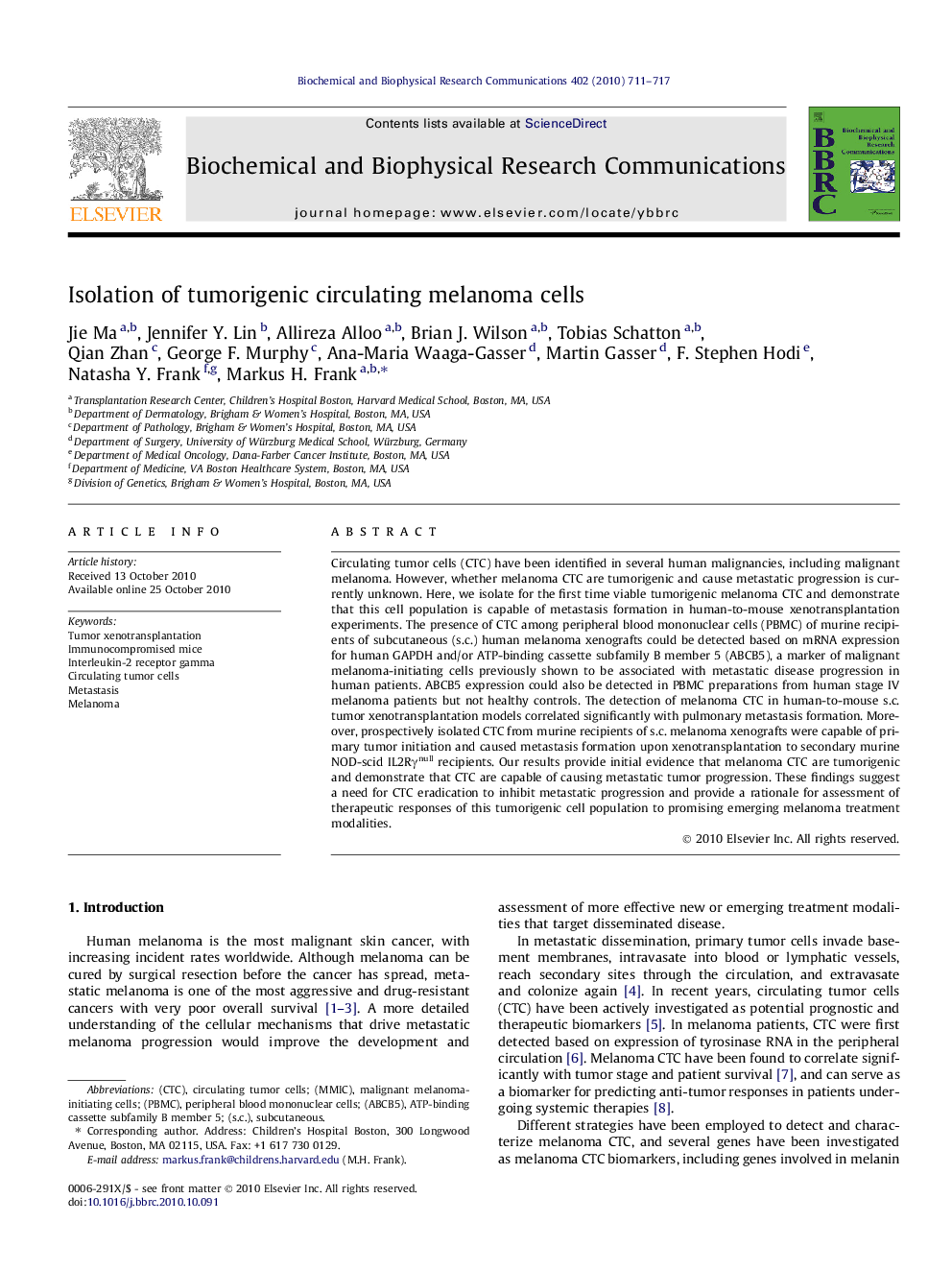| Article ID | Journal | Published Year | Pages | File Type |
|---|---|---|---|---|
| 1930955 | Biochemical and Biophysical Research Communications | 2010 | 7 Pages |
Circulating tumor cells (CTC) have been identified in several human malignancies, including malignant melanoma. However, whether melanoma CTC are tumorigenic and cause metastatic progression is currently unknown. Here, we isolate for the first time viable tumorigenic melanoma CTC and demonstrate that this cell population is capable of metastasis formation in human-to-mouse xenotransplantation experiments. The presence of CTC among peripheral blood mononuclear cells (PBMC) of murine recipients of subcutaneous (s.c.) human melanoma xenografts could be detected based on mRNA expression for human GAPDH and/or ATP-binding cassette subfamily B member 5 (ABCB5), a marker of malignant melanoma-initiating cells previously shown to be associated with metastatic disease progression in human patients. ABCB5 expression could also be detected in PBMC preparations from human stage IV melanoma patients but not healthy controls. The detection of melanoma CTC in human-to-mouse s.c. tumor xenotransplantation models correlated significantly with pulmonary metastasis formation. Moreover, prospectively isolated CTC from murine recipients of s.c. melanoma xenografts were capable of primary tumor initiation and caused metastasis formation upon xenotransplantation to secondary murine NOD-scid IL2Rγnull recipients. Our results provide initial evidence that melanoma CTC are tumorigenic and demonstrate that CTC are capable of causing metastatic tumor progression. These findings suggest a need for CTC eradication to inhibit metastatic progression and provide a rationale for assessment of therapeutic responses of this tumorigenic cell population to promising emerging melanoma treatment modalities.
Research highlights► This study isolates for the first time viable tumorigenic circulating melanoma cells. ► Results provide evidence that circulating melanoma cells cause metastasis formation. ► Circulating melanoma cell detection correlates significantly with metastatic disease.
